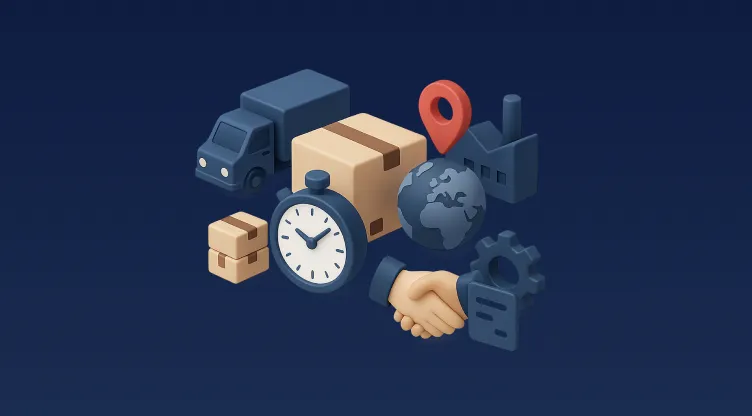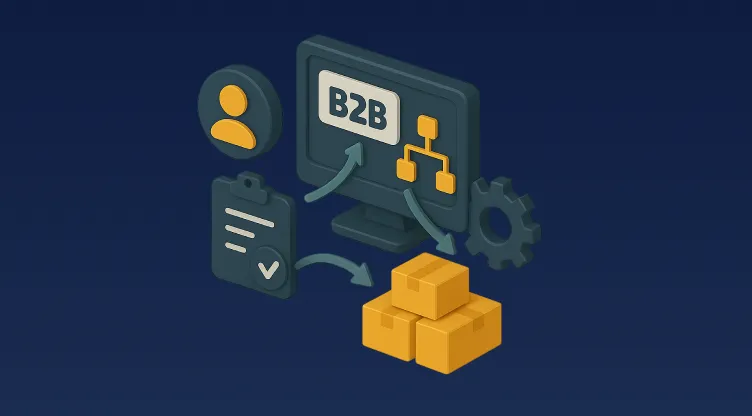Inventory Lead Time Reduction: Strengthen Supplier Ties, Ship Smarter, Source Locally

Table of Contents
Quick Snap: “LogiCrack Summary”
Need to move products faster and smoother?
This guide explores how tighter supplier relationships, choosing smarter shipping options, and sourcing from local vendors can dramatically reduce inventory lead time. It also shows how a warehouse inventory management system like Zoho Inventory or Omniful’s platform can keep everything running smoothly behind the scenes.
Why Inventory Lead Time Still Makes or Breaks Business Success
In today’s always-on, instant-delivery world, long inventory lead times feel like a leftover from a slower age. Whether you’re running a D2C brand in KSA or managing a retail chain across MENA, waiting days or weeks for stock to arrive can disrupt everything—from cash flow to customer satisfaction.
Delays don’t just mean missed sales. They mess with your replenishment cycles, pile up holding costs, and create friction across the supply chain. But the good news? You can control more of your lead time than you think—if you know where to look.
The Silent Culprits Behind Long Lead Times
Even the best-run supply chains have hidden bottlenecks. These often include:
- Disjointed supplier communication
- Slow purchase order (PO) processes
- Outdated or inflexible shipping options
- Relying on distant vendors despite local alternatives
- Poor visibility across warehouse operations
This is where technology comes in—not just fancy dashboards, but real, operational impact from systems like Zoho Inventory or advanced platforms like Omniful.
Strengthening Supplier Collaboration
Let’s face it: your suppliers aren’t just vendors. They’re partners in speed.
Here’s how to tighten the loop:
- Share forecasts: Let suppliers see your sales trends. When they know what’s coming, they can prep earlier.
- Digitise POs: Manual POs are slow. Platforms like Omniful and Zoho Inventory enable fast creation and tracking of purchase orders directly within a shared system.
- Set clear SLAs: Agree on realistic but tight timelines. Monitor and follow up when expectations aren’t met.
- Supplier portals: Give vendors a place to self-manage updates, reducing back-and-forths.
💡 Pro Tip: Omniful’s supplier module allows PO tracking, shipment scheduling, and real-time visibility—all in one dashboard.
Upgrade Your Shipping Strategy
Shipping isn’t just about choosing a courier. It’s about designing routes that beat the clock.
What to explore:
- Mix shipping methods: Use air for urgent goods, ground for bulk, and hyperlocal for instant deliveries.
- Work with regional carriers: They often outperform global players for last-mile and mid-mile in MENA cities.
- Enable multi-carrier setups: Systems like Omniful offer seamless integration with 100+ carriers.
- Automate rules: Route orders based on speed, cost, and SLA using smart automation settings.
📦 Case in point: A leading Saudi D2C group reduced delivery times from 4–6 days to under 3 hours in Riyadh by optimising delivery zones and moving from 3PL to in-house using local dark stores.
Sourcing Smarter by Thinking Smaller (and Closer)
Local sourcing isn’t just a sustainability play. It’s a speed advantage.
Here’s why MENA businesses are shifting:
- Shorter transit times from UAE or KSA suppliers versus overseas imports
- Less customs complexity
- Stronger supplier relationships and easier returns
Even if pricing is slightly higher, the total cost often drops once you factor in reduced shipping costs and fewer delays.
And platforms like Zoho Inventory can help you segment by supplier region, track vendor performance, and optimise reordering patterns accordingly.
Visibility Is Everything: Why You Need a Smart WMS
What good is faster lead time if your team can’t see it?
A warehouse inventory management system (WMS) ensures:
- Real-time tracking of inbound and reserved stock
- Streamlined putaway and picking workflows
- Automatic alerts for delayed SKUs or replenishment thresholds
Omniful’s system, for example, supports:
- Multi-hub tracking
- Goods receipt notes (GRNs)
- Safety stock buffers
- Barcode-based accuracy
- Mobile inventory updates on the go
This means that even if something slips on the supplier’s end, your warehouse stays agile enough to catch up.
From Reactive to Proactive: Using Data for Smarter Lead Time Planning
Forecasting isn’t a buzzword anymore—it’s a daily need.
With predictive analytics embedded into platforms like Omniful or Zoho Inventory:
- You get AI-powered demand planning
- Can avoid stockouts before they happen
- See lead time variability trends per supplier
- Adjust reorder points dynamically
This makes your entire operation less about reacting and more about preparing.
Practical Next Steps for MENA Supply Chains
If you’re managing inventory across UAE, KSA, Egypt or beyond, here’s where to start:
- Audit your current supplier lead times
- Digitise your PO process
- Set automation rules for smarter routing
- Shift part of your sourcing to local suppliers
- Invest in a modern WMS with strong MENA support
And remember: speed is no longer a competitive advantage. It’s the baseline.
FAQ: Reducing Lead Time in MENA Logistics
What is inventory lead time exactly?
It’s the time from placing a purchase order to having the items available for use or sale in your warehouse.
Why is supplier collaboration so important?
It ensures alignment, reduces delays, and supports accurate planning.
Can Zoho Inventory reduce lead times?
Yes. By digitising your purchase orders and automating alerts, it minimises human error and lag time.
Is local sourcing always cheaper?
Not necessarily on unit price, but overall costs often drop due to faster delivery and fewer operational disruptions.
What if my warehouse system is outdated?
Switching to a platform like Omniful can streamline receiving, tracking, and reordering—key steps in cutting lead time.
Wrap-Up: Faster Inventory, Faster Growth
The secret to lower inventory lead time doesn’t lie in one fix. It’s a combination of aligned suppliers, upgraded logistics, localised sourcing, and the right digital tools.























